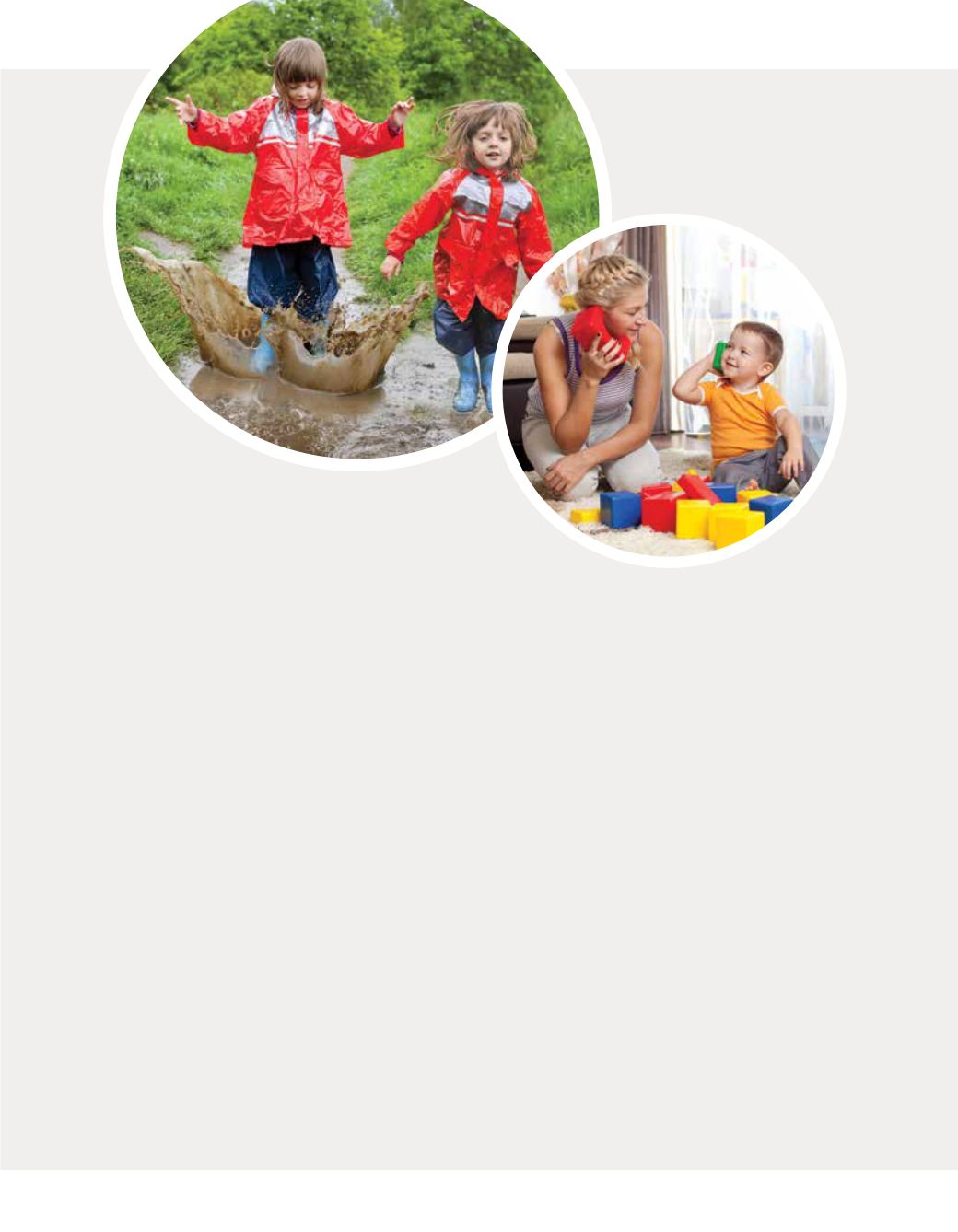
Imagine a toddler playing with blocks.
An adult can easily show them how to
use these blocks to build a tower, but a
child may have something different in
mind – they may want to use a block
as a telephone, an aeroplane flying in
the sky or simply to bash against the
floor to listen to the sound it makes. If
we lead by example and demonstrate
how a tower is built, we’re limiting
the play experience. We can empower
a child by allowing them to take
control to lead themselves to what is
meaningful for them.
To get started with child-led play,
use phrases such as, “Show me what
you want to do” and continue your
involvement by tuning into the play
and encouraging your child with
words such as, “That’s up to you”,
“You can decide” or “That can be
whatever you want it to be”. Pretend
that you don’t know what to do and
allow your child to teach you.
Play becomes more complex and
sophisticated as children grow and
mature physically, socially, intellectually
and emotionally. What children
experience, including how their
parents respond to them, shapes their
development as they adapt to the world.
Regardless of age, children enjoy
play that is directed by them, with
objects of their choice in a way they
find interesting. Aside from enjoyment,
children are gaining much more
from child-led play. They’re learning
to confidently voice ideas and they
learn what it feels like to have these
ideas heard and valued. When we
allow children to lead, we’re sending
a strong message to our children
that because they’re important to us,
anything they are interested in is also
interesting to us. By following your
child’s lead you’re supporting them
to become confident at sharing their
thoughts and ideas and in turn, this
can transfer into other areas of their
life, helping them to feel capable and
secure.
Your relationship with your child
is the foundation of his or her healthy
development. Being an observer
allows us to see into the world of our
children, understanding what they’re
thinking, how they’re coping and what
they find interesting. Children play
through what they know and what
they want to know more about. We are
seeing them develop their personality
and character.
When does play become
therapeutic?
There are so many types of play
– exploratory, imaginative and
manipulative, to name a few.
Therapeutic play takes child-led play a
few steps further. Imagine this scenario:
on a rainy morning, a child waits for
his school bus to arrive. On the way
to school he witnesses a taxi crash
into a mini bus. He continues to think
about the crash on his way to school.
He arrives at school, distracted and
withdrawn. His teacher watches him
from across the classroom as he uses
each of his hands to crash into each
other over and over again. He continues
to repeat this play over and over again
until he doesn’t need to any more.
It is often difficult for children to
express what they feel with words.
April 2015
43


